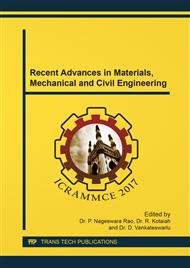p.13
p.20
p.26
p.33
p.39
p.44
p.50
p.54
p.60
Studies on Notch Tensile Properties of Ti-5Al-2.5Sn ELI at Cryogenic Temperature for Hydrogen Embrittlement Effect
Abstract:
Ti-5Al-2.5Sn alloy is widely used in aerospace applications due to its high specific strength, low coefficient of thermal expansion and good corrosion resistance. Presence of interstitial elements in the alloy has some significant effects on its properties. However the high notch toughness and cryogenic ductility attracts the usage of Ti-5Al-2.5Sn for usage at cryogenic temperatures even at 20K. For hydrogen embrittlement studies and for investigating notch sensitivity of Ti-5Al-2.5Sn alloy, the notched and smooth specimens from ELI grade of Ti-5Al-2.5Sn alloy were subjected to LH2 exposure and tensile test at 20K (-253°C) and at 77K (-196°C). The tensile properties obtained from different specimens were compared and analyzed. Also the notch to smooth tensile strength ratio (NSR) were compared and analysed. The obtained NSR was above unity which confirms the low notch brittleness. The tensile strength values between LH2 exposed and unexposed specimen at 20K and 77K were compared and it revealed greater compatibility of Ti-5Al-2.5Sn-ELI with liquid hydrogen environment.
Info:
Periodical:
Pages:
39-43
Citation:
Online since:
February 2018
Authors:
Keywords:
Price:
Сopyright:
© 2018 Trans Tech Publications Ltd. All Rights Reserved
Share:
Citation:


